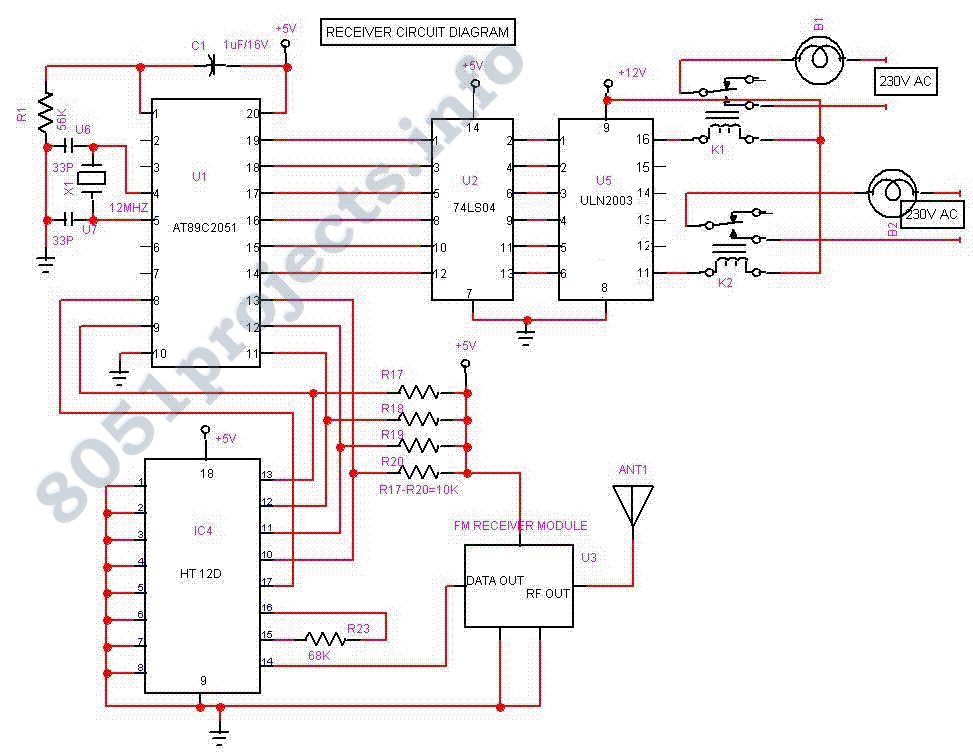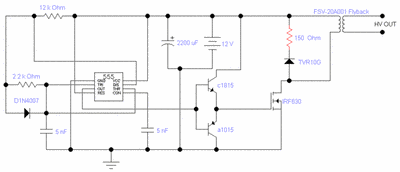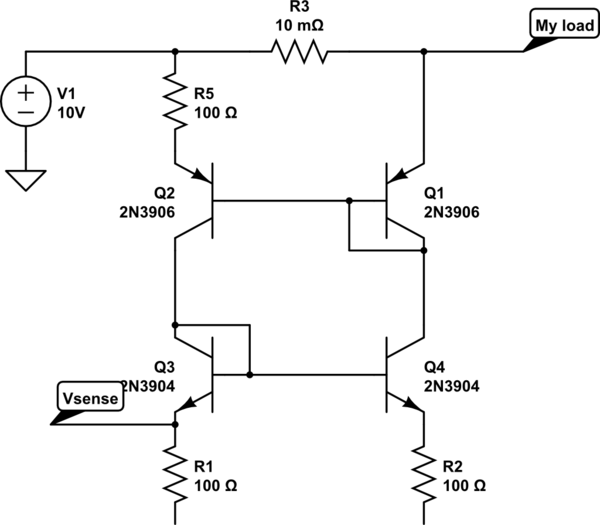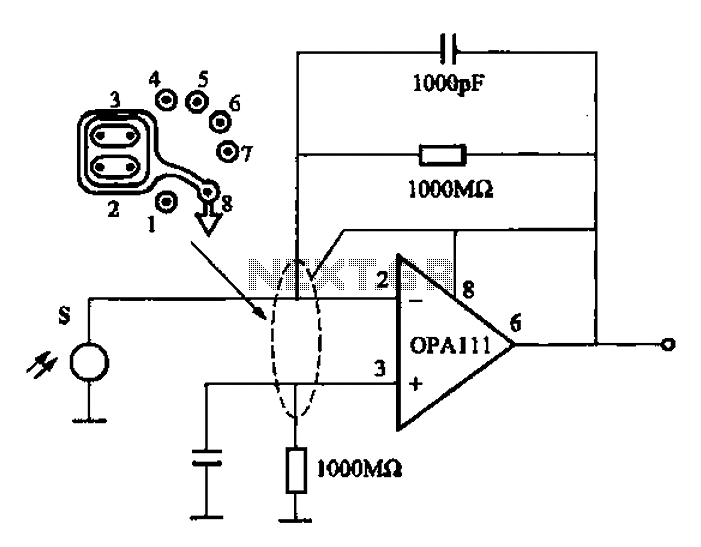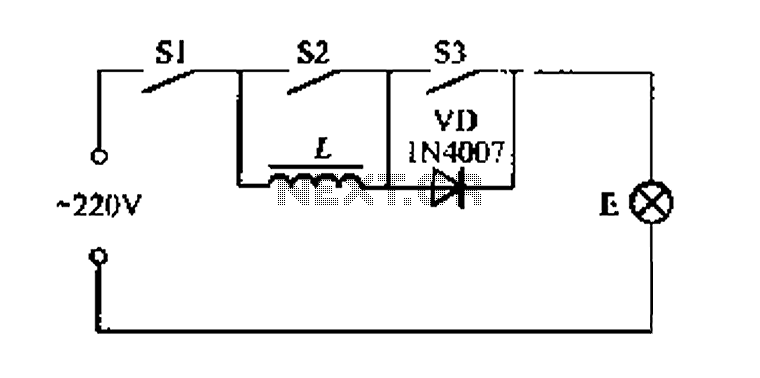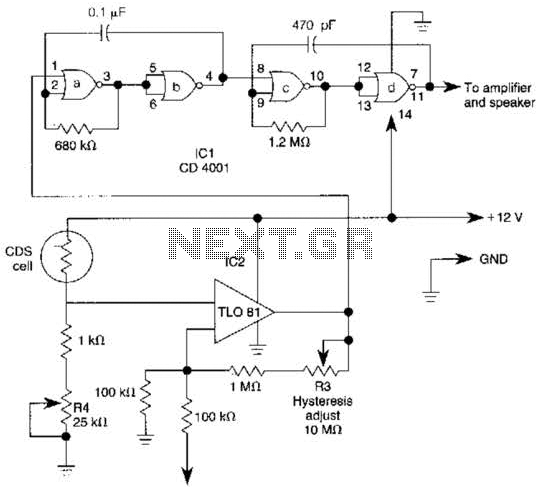
IR Remote Control Extender mark 4 Circuit
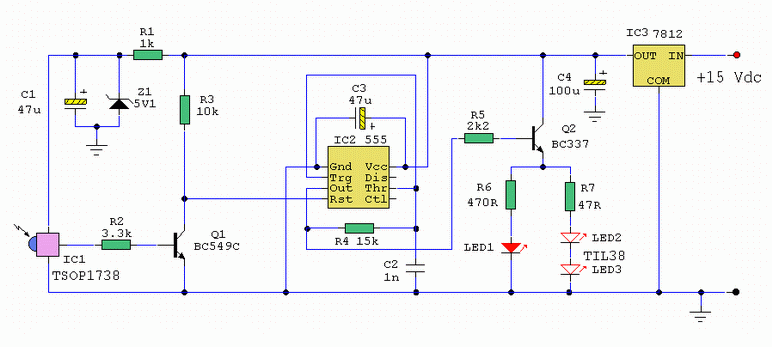
An infrared wired repeater circuit is designed to control appliances from a remote location. Parts List: R1: 1k Resistor (1), R2: 3.3k Resistor (1), R3: 10k Resistor (1).
The infrared wired repeater circuit serves as an interface for controlling various electrical appliances from a distance, utilizing infrared signals for communication. This circuit typically consists of several key components, including resistors, an infrared receiver, an infrared transmitter, and possibly additional supporting components like capacitors and diodes.
The resistors listed in the parts list, R1 (1kΩ), R2 (3.3kΩ), and R3 (10kΩ), are used to limit current and set the appropriate voltage levels within the circuit. R1 might be used in conjunction with the infrared receiver to ensure that the input signal is at a safe level for processing. R2 could serve as a pull-up resistor for the output signal, ensuring that the line is high when the infrared signal is not being received. R3 may be part of a voltage divider or biasing network for the infrared transmitter, allowing it to function efficiently when sending signals to the controlled appliances.
The infrared receiver detects signals from a remote control device, converting these signals into electrical impulses. The output from the receiver is then processed by the circuit, which may include a microcontroller or a simple transistor switch to activate the infrared transmitter. The transmitter, in turn, sends the appropriate infrared signals to the targeted appliances, effectively allowing remote control functionality.
To enhance the circuit's performance, additional components such as capacitors may be included to filter out noise and stabilize the power supply. Diodes could be used for protection against reverse polarity or to ensure that current flows in the correct direction.
Overall, this infrared wired repeater circuit is a practical solution for remote appliance control, providing convenience and flexibility in managing electronic devices from various locations within a home or office environment.An Infra Red wired Repeater circuit to control appliances from a remote location. Parts List: R1: 1k Resistor (1) R2: 3.3k Resistor (1) R3: 10k. 🔗 External reference
The infrared wired repeater circuit serves as an interface for controlling various electrical appliances from a distance, utilizing infrared signals for communication. This circuit typically consists of several key components, including resistors, an infrared receiver, an infrared transmitter, and possibly additional supporting components like capacitors and diodes.
The resistors listed in the parts list, R1 (1kΩ), R2 (3.3kΩ), and R3 (10kΩ), are used to limit current and set the appropriate voltage levels within the circuit. R1 might be used in conjunction with the infrared receiver to ensure that the input signal is at a safe level for processing. R2 could serve as a pull-up resistor for the output signal, ensuring that the line is high when the infrared signal is not being received. R3 may be part of a voltage divider or biasing network for the infrared transmitter, allowing it to function efficiently when sending signals to the controlled appliances.
The infrared receiver detects signals from a remote control device, converting these signals into electrical impulses. The output from the receiver is then processed by the circuit, which may include a microcontroller or a simple transistor switch to activate the infrared transmitter. The transmitter, in turn, sends the appropriate infrared signals to the targeted appliances, effectively allowing remote control functionality.
To enhance the circuit's performance, additional components such as capacitors may be included to filter out noise and stabilize the power supply. Diodes could be used for protection against reverse polarity or to ensure that current flows in the correct direction.
Overall, this infrared wired repeater circuit is a practical solution for remote appliance control, providing convenience and flexibility in managing electronic devices from various locations within a home or office environment.An Infra Red wired Repeater circuit to control appliances from a remote location. Parts List: R1: 1k Resistor (1) R2: 3.3k Resistor (1) R3: 10k. 🔗 External reference
